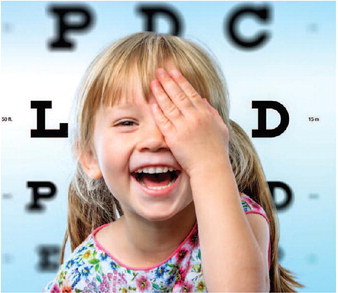How often do kids need eye exams?
Many people expect their vi sion to fade as they grow older.
Such expectations are not un –
founded, as the National Eye In stitute notes that certain vision changes, including diminished vi- sion and diculty distinguishing
colors, are a normal part of aging.
But even children can experience changing vision, which only highlights the importance of kids receiving routine eye exams.
Eye examination frequency
depends on the age of the child and the condition of his or her eyesight at the time of each exam.
The American Optometric Association has established these guidelines for pediatric eye examination frequency to help parents know when to get their young- sters' vision checked.
Birth to 2 years
Children in this age group
whose physicians have deemed them asymptomatic of potential eye conditions or at low risk of developing eye conditions should have their eyes examined sometime between 6 and 12 months of age. Kids who
may be at risk should adhere to the same schedule, though the AOA notes that exams for at-risk children may need to be conducted more frequently, even in this age group, than kids who are symptom-free. Eye
doctors will speak with parents and recommend an eye exam schedule based on their initial examination.
3 through 5 years
Children between the ages of 3
and 5 who are at low risk of developing eye conditions should have their eyes examined at least once between their third and fifth birthdays. The same goes for kids who are at risk, though doctors may recommend more frequent examinations for such youngsters.
6 through 18 years
Whether they are at risk of eye conditions or not, children between the ages of 6 and 18 should have their eyes examined before first grade and annually thereafter. Youngsters who are at risk may need more frequent examinations as they get older.
Eye examinations are an impor tant component of child healthcare. By adhering to AOA eye examination guidelines, parents can ensure any vision problems their children develop are quickly caught and can be treated before they adversely af- fect youngsters' lives.



